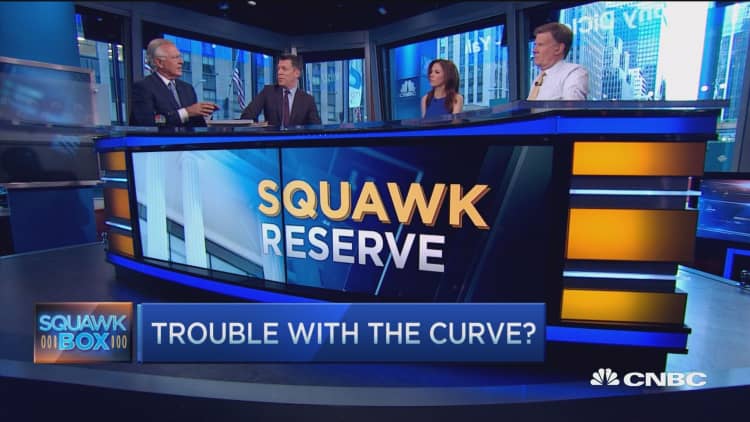
If the Federal Reserve raises interest rates before December, it will be defying a quarter-century of policymaking history.
Forget all that recent hawkish talk from top officials at the central bank. When it comes right down to it, the Federal Open Market Committee and Chair Janet Yellen likely will raise rates only when the financial markets give a clear signal they are ready.
History suggests that some 90 percent of rate hikes over the past 25 years already were highly anticipated by the market, with at least a 70 percent chance discounted in, according to research Goldman Sachs released this week.
If that holds, it would seem to shut down any chance of a hike at either the June or July FOMC meetings. So even though a flurry of Fed officials, from Robert Kaplan to James Bullard to John Williams, recently have indicated the economy is strong enough to support a summer move, the reality of that happening is slim.
"The low market-implied odds, softer data, and uncertainty about the monetary transmission mechanism lead us to believe that a June hike is now rather unlikely," Goldman economist Daan Struyven said in a note to clients. "In fact, it would be a unique outcome in modern Fed history."
The CME's Fed Watch tool, which uses fed fund futures trading levels to determine the likelihood of a hike at each meeting, indicates that a better than 50 percent chance of a move doesn't happen until the December FOMC session.
As of Wednesday morning trading, the market was pricing in a June funds rate of 0.37 percent, or unchanged from its current level. The contract for September, which is a date many on Wall Street think is ripe for a hike, indicates a rate of just 0.43 percent, while December points to a 0.5 percent rate, a 0.13 percentage point increase from the current level that the CME tool translates to a 59 percent chance of a hike.
Such odds don't portend well for a Fed tightening.
Goldman found that going back to 1994, 90 percent of the 31 rate hikes were priced in at least 50 percent 30 days ahead of the FOMC meeting. Getting closer to the meeting, the median hike was 95 percent priced in, with only a few deviations, such as from the Alan Greenspan Fed in March 1997 and November 1999.
Wall Streeters who had been certain of multiple rate hikes this year have begun to capitulate.
Goldman only recently altered its predictions — first four, then three and now two — amid stubbornly low inflation and a labor market that appears to have cooled off.
"Uncertainty about the monetary transmission mechanism will probably remain high for the time being," Goldman economist Zach Pandl said in a note. "Largely for this reason, we are revising our near-term forecasts for the funds rate, and see two fewer hikes through the end of 2017 than we did previously."
Money managing giant BlackRock said last week a no-hike scenario is possible for 2016, while Bank of America Merrill Lynch also tore up its forecast, now calling for one hike this year — in September, for which the market is pricing in just a 38 percent chance — and no more until March 2017.
BofA economists said Friday's weak 160,000 nonfarm payrolls number for April played a role in their forecast, but there are other factors at hand.
"To be clear, the jobs report was not the sole factor for the revision to our call for the Fed. It was simply the last of a string of softer indicators that has prompted us to change our forecast," the firm said. "But remember, the economy is still expanding, inflation is still accelerating and the Fed is still normalizing."




